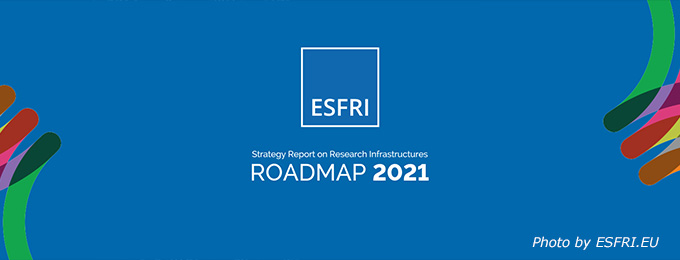ESFRI provided conclusions and recommendations for the ESFRI Roadmap 2021 to be launched during the ESFRI days in December 2021.
On 13 October 2021, the European Strategy Forum on Research Infrastructures (ESFRI) published the 2016 ESFRI project monitoring report. However, the monitoring already concluded in June 2020. The report came out just days before the latest European supercomputer Discover was inaugurated by Commissioner Mariya Gabriel (Innovation, Research, Culture, Education and Youth) in Bulgaria on 21 October.
Research infrastructures (RIs) are a central pillar to create an impactful European Research Agenda (ERA) (see SwissCore article) and are essential in achieving the European policy agenda, being vital enablers for the green and digital transition and delivering on the recovery of Europe and the promotion of Open Science.
In this context and under previous framework programmes, ESFRI provided the development of 55 new research infrastructures, of which 18 ESFRI Projects and 37 Landmarks (successfully implemented infrastructures). For the ESFRI Roadmap 2021, 11 new RIs will be included.
The monitoring analysed six projects considering the minimal requirements for the implementation phase as specified in the 2021 ESFRI Roadmap Guide. The assessment examined the following projects: i) Aerosols, Clouds and Trace gases Research Infrastructure (ACTRIS); ii) International Centre for Advanced Studies on River-Sea Systems (DANUBIUS-RI); iii) European Research Infrastructure for Heritage Sciences (E-RIHS); iv) European Solar Telescope (EST); v) European Infrastructure for Multi-scale Plant Phenomics and Simulation (EMPHASIS) and vi) KM3 Neutrino Telescope 2.0 (KM3Net).
The ESFRI Executive Board acknowledged that all six ESFRI projects made significant progress towards the implementation phase and that all will be re-included in the ESFRI Roadmap 2021, underlining their crucial importance to ERA. The monitoring exercise also identified specific challenges, some of them linked to COVID-19 (see SwissCore article), and provided recommendations for all projects. Overall, ACTRIS and KM3NeT were highly ranked in terms of their implementation stage. Consequently, both were invited to follow the official process to achieve the landmark status, but only ACTRIS decided to initiate the process to become a Landmark in June 2021 and received the Forum’s approval in September 2021. As the monitoring already concluded in June 2020, there have been new developments in the meantime. For example, ACTRIS is now close to the establishment of ACTRIS-ERIC, and EST, identified the location for the telescope.
The Work Programme (WP) 2021-2022 on RI launched in June 2021 under Horizon Europe included a call to support the ESFRI 2016 projects for the consolidation of the research infrastructure landscape. Moreover, a call for the preparatory phase of new ESFRI infrastructure projects was encompassed.
The recently launched ESFRI project monitoring report provided conclusions for the upcoming Roadmap 2021, initially published in 2006 and last updated in 2018. The roadmap is significant as it probably includes the best European RIs (ESFRI Projects and Landmarks) based on a holistic evaluation and selection procedure and describes the broader European RIs landscape. The Roadmap 2021 Launch will be presented during the upcoming ESFRI Days that will take place from 6 to 8 December 2021, in Ljubljana, Slovenia. It will be hosted by the Slovenian Presidency of the Council of the EU. During this event, the 78th ESFRI Forum Plenary and the 1st ESFRI Stakeholders Forum Meetup (see SwissCore article) will also be organised.
In the WP 2021-2022 for Research Infrastructures, a conference on “European Research Infrastructures: 20 years of ESFRI, achievements and future insights” is planned in the first semester of 2022.

